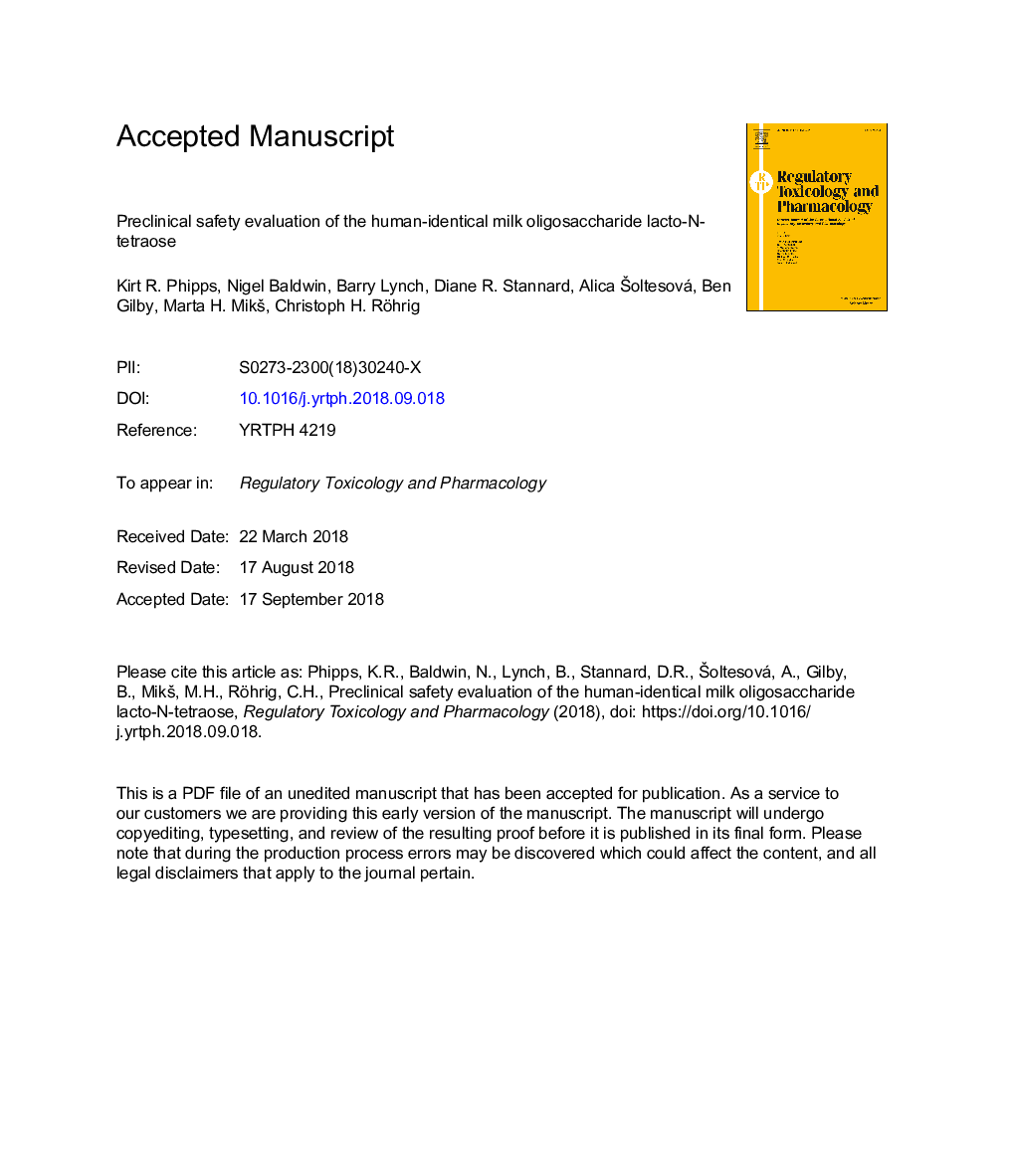| Article ID | Journal | Published Year | Pages | File Type |
|---|---|---|---|---|
| 11031878 | Regulatory Toxicology and Pharmacology | 2018 | 55 Pages |
Abstract
Lacto-N-tetraose (LNT) is one of the most abundant oligosaccharides that are endogenously present in human breast milk. To simulate the composition of human breast milk more closely, commercial infant formula can be supplemented with human-identical milk oligosaccharides, which are manufactured structurally identical versions of their naturally occurring counterparts. As part of the safety evaluation of LNT, in vitro genotoxicity tests and a subchronic oral gavage toxicity study (in neonatal Sprague-Dawley rats) were conducted. In the subchronic study, LNT was administered at dose levels of 0, 1,000, 2500 or 4000â¯mg/kg body weight (bw)/day, once daily for at least 90 days, followed by a 4-week treatment-free period. An identically comprised reference control group received fructooligosaccharides powder (a non-digestible oligosaccharide used in infant formula) at 4000â¯mg/kgâ¯bw/day, to allow for direct comparison against the high-dose LNT group. LNT was non-genotoxic in the in vitro tests. There were no compound-related adverse effects in the 90-day study; therefore, 4000â¯mg/kgâ¯bw/day (the highest feasible dose) was established as the no-observed-adverse-effect-level. These results support the safe use of LNT in infant formula and as a food ingredient, at levels not exceeding those found naturally in human breast milk.
Related Topics
Life Sciences
Environmental Science
Health, Toxicology and Mutagenesis
Authors
Kirt R. Phipps, Nigel Baldwin, Barry Lynch, Diane R. Stannard, Alica Å oltesová, Ben Gilby, Marta H. MikÅ¡, Christoph H. Röhrig,
